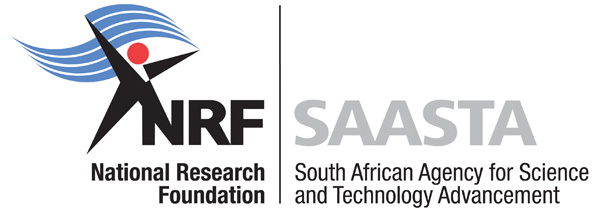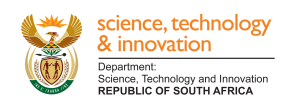Science of South Africa
Prize Winners
First Place
 Photographer: Shivan Parusnath
Photographer: Shivan Parusnath
Title: All South African Lizard
Why is this photograph of a dragon-like lizard a representation of South African science? Well – this is a lizard that can be found in no other country besides South Africa. The Sungazer (Smaug giganteus) is a Threatened lizard species found only in the Highveld Grasslands of South Africa, and is one of our true natural treasures. This is the species I have been studying for 6 years now at Wits University – from 2011-2014 for my Masters research, and from 2014-now for my PhD. I wanted to work on this remarkable species because it is truly unique in its looks (it was named after Smaug from the Hobbit!), its behaviour (the only member of its family that digs its own burrows), and the fact that it is Threatened by habitat loss and poaching, and desperately needs our help. The Sungazer is one of many, many endemic South African reptiles that we still do not know enough about, and without knowledge, we cannot take action to protect them. I hope that with my photography, I can encourage and inspire people to care more about our reptiles, and help us preserve them so that future generations can appreciate them as I do.
Second Place
 Photographer: Dr Morgan Trimble
Photographer: Dr Morgan Trimble
Title: South Africa’s science at sea
This image seeks to capture the glory of the SA Agulhas II, one of the finest ocean-going research vessels in the world and a research legacy South Africa takes great pride in. The ship features state-of-the-art research, instrumentation and laboratory facilities and an expert crew. It also boasts comfortable passenger accommodation for upwards of 80 scientists. It’s as tall as a 15-storey building and longer than a rugby field. Although the ship frequently undertakes research expeditions to the Prince Edward Islands and Antarctica and is a capable ice breaker, this photo was taken during the 2017 SEAmester II voyage. SEAmester is an educational opportunity for South African post graduate students from all over the country to join a research expedition while completing coursework in marine biology and oceanography. This year’s expedition sailed west out of Cape Town to the Prime Meridian and back to service seafloor instruments making longterm measurements of temperature and current velocity to characterize changes in the Atlantic Meridional Overturning.
Commended
 Photographer: Dr Morgan Trimble
Photographer: Dr Morgan Trimble
Title: African penguins thrive with help from conservation science
Anybody home? An endangered African penguin idles in front of his plastic igloo (an artificial nest) at Stony Point Penguin Colony in Betty’s Bay. Traditionally, these birds dug burrows into the guano layer on rocky islands, but people harvested the guano for nitrogen-rich fertilizer, leaving the island-breeding penguins exposed to the harsh elements. The penguins started a few new colonies on the mainland, where suburban communities help keep land predators at bay. Before such dense human habitation, predators like caracals and leopards would have limited breeding success for penguins on the mainland. Still, predators do occasionally find their way in to these protected penguin colonies—in 2016 a cape leopard killed 33 penguins at Stony Point. Penguin colonies like Stony Point and the famous Boulders Beach are extremely popular with tourists and a great way to spread an important environmental message—African penguins are not only endangered because of the loss of nesting sights on islands, but also because of overexploitation of fish marine pollution.
 Photographer: Ms Laura Figenschou
Photographer: Ms Laura Figenschou
Title: Day and night: Can science bring us back into the light
In this image the banks of this Western Cape dam are visible, revealing dead trees that were once completely covered by water. I took this image in order to bring awareness to the water crisis in Cape Town and our desperate need for sustainable water practices. Many Cape Town hotels have recently been criticized on social media for allowing visitors to use as much water as they like and not informing people about the water crisis for the sake of business. However, as summer rolls around and tourist season begins, our foreign visitors may find themselves completely without water. This does not bode well for Cape Town’s tourism industry and there is an urgent need to take sustainable tourism seriously. The only way forward in this changing climate is to allow scientific research to guide us in making water management decisions. South Africa’s world-class science and engineering have the potential to release us from this water crisis and tourism disaster.
 Photographer: Mr Martin Giger
Photographer: Mr Martin Giger
Title: Life finds a way
A gnarly quiver tree (Aloidendron dichotomum) finds purchase on the rocky slope of a mountain in the Namaqua-Natal belt. Defying scorching heat and water deprivation for the best part of the year, these trees are endemic to this corner of the Northern Cape and southern Namibia. In the area of this mapping field trip carried out by the Department of Geological Sciences from the University of Cape Town, the quiver trees marked prominent features, growing on the talus slopes as loose collectives of dozens of single plants that we were thus tempted to call forests. Although they offered little shade, they were a welcome relief for the eye, a stronghold of life over an environment that is seemingly hostile to it. Whilst it is important to keep one’s focus on the objective, it shall not be forbidden to pause for a moment, absorb the strangeness of a place or shed one’s familiarity with it alike, and perhaps take a picture.
Click here to read more about the competition.
*The copyright of the photographs entered into the competition remains with the photographer. The photographs may be published in connection with the SA Science Lens competition, acknowledging SAASTA, the SA Science Lens competition and the photographer. For enquiries regarding permission to use photos, please contact Joanne Riley, Science Editor at SAASTA, at joanne@saasta.ac.za or 012 392 9349.

 Lthakazi Masilela
Lthakazi Masilela The South Africa Agency for Science and Technology Advancement (SAASTA) is a business unit of the
The South Africa Agency for Science and Technology Advancement (SAASTA) is a business unit of the 